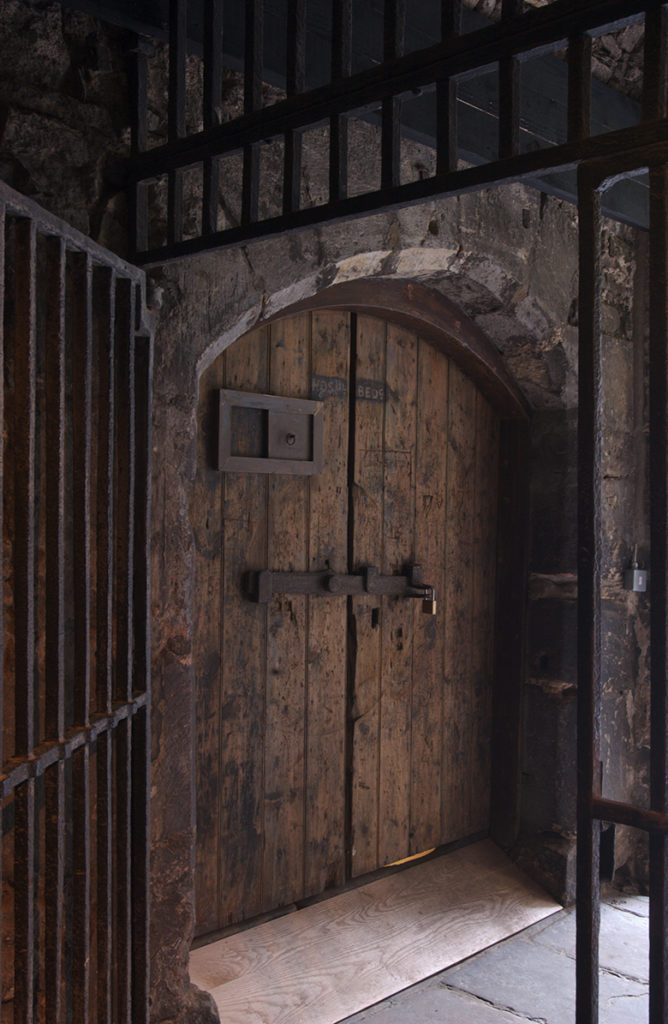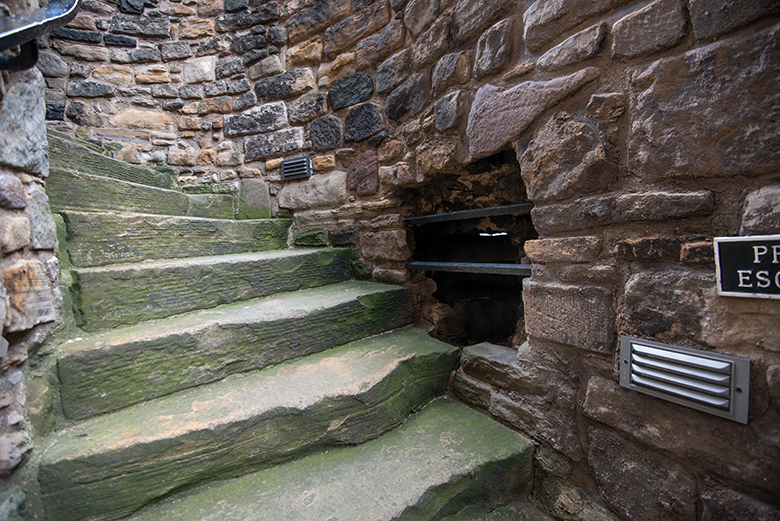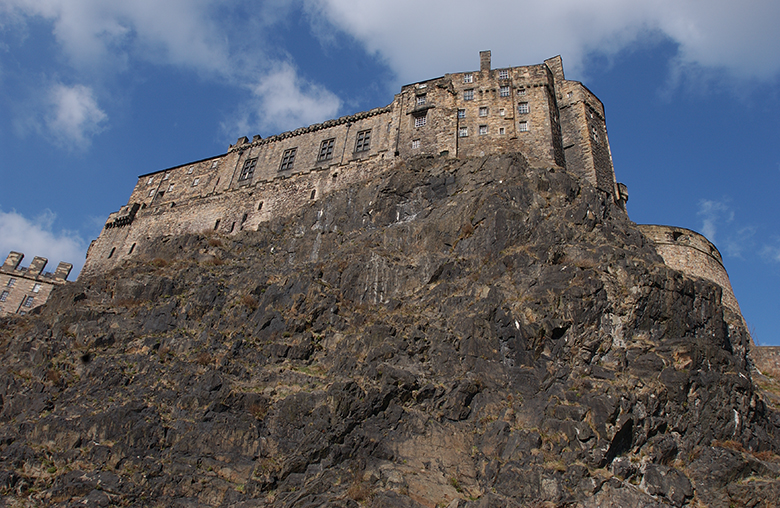
Ten epic attempts to escape Edinburgh Castle
19 June 2020
The grim walls of Edinburgh Castle haven’t just kept invaders out: for centuries, they’ve also served to keep prisoners in. This stronghold was a cruel prison for criminals, prisoners of war, religious and political dissenters and even pirates. The inmates locked in its subterranean vaults and cells endured often appalling conditions. Some died in its pitiless depths while most struggled to survive in the hope of eventual release. But a few couldn’t wait, took matters into their own hands and plotted their escape!
The prospects of a prison break seem pretty meagre when you look up at the castle’s stone ramparts. Imagine being locked away within its formidable defences atop the towering Castle Rock while armed guards watched its sole entrance.
To be fair, sometimes security hasn’t been the best. One castle guide tells a story about two unruly American soldiers being held in the Military Prison during the Second World War who were supposedly caught attempting to break back into their cells at the end of a clandestine night drinking in the city below.

So how do you escape a stretch in Edinburgh Castle? We’ve pulled together ten of the more memorable escape attempts:
Disguise yourself as an old cobbler
When the Jacobite leader James Mhor MacGregor – son of the famous Rob Roy MacGregor – was held at the castle in 1752 for his part in the abduction Jean Kay, his daughter (who inspired Robert Louis Stevenson’s Catriona) paid him a visit. She had dressed herself as a cobbler and switched costumes with her dad once out of sight of the guards. MacGregor then hobbled out without arousing suspicion. He managed to get clean away to France.
Hide in a tub of poo
One story suggests a desperate French prisoner went to particularly extreme ends to escape in 1799. The man had noted that barrow-loads of human waste were tipped down the Castle Rock every day, landing on a ledge just below the rampart. So he hid himself in the poo-filled cart and was duly thrown out. But this is no Shawshank Redemption. As he tried to hide, British sentries spotted the prisoner and he was hauled back up at gun point.
Sneak out the back
This wasn’t strictly a prison break. For one, the person in question was no prisoner – she was St Margaret, Queen of Scotland. For another, she was already dead. But it was certainly a daring escape. Margaret had died while her brother-in-law, Duncan Ban, besieged the castle in 1093. Duncan’s army blocked the main exit, so the queen’s supporters smuggled her body out of an unwatched postern gate and away for burial in Dunfermline.

Smuggle in an escape rope inside a cask of butter
The outlaw Seumas an Tuim or James Grant of Carron was imprisoned in the castle for two years. When his wife was permitted a rare visit, she brought her husband a coil of strong cord hidden within a cask of butter. Seumas used it to climb out of his cell and down the Castle Rock to meet his waiting son before fleeing back to the Highlands. He was later pardoned.
Hack a hole through the ramparts and climb down the Rock
The Great Escape of 1811 destroyed the castle’s reputation as a secure prison. Brilliantly organised French prisoners of war systematically cut a hole through the Devil’s Elbow rampart and turned their washing lines into a rope. Forty-nine men then climbed down the Castle Rock, one of them falling to his death. The rest made it to freedom but all were later recaptured.

Hide in a clothes chest
The child king James II was being held at the castle by its keeper, William Crichton, as rival noble factions sought control over the eight-year-old boy. But his mother, Joan Beaufort, managed to smuggle out her son by hiding him in a clothes chest. This dramatic episode was a key element of Rona Munro’s play James II. But to be honest, it might not have happened – the often unreliable 16th-century historian Hector Boece is the first to tell this story.
Climb over rampart
Archibald Campbell of Skipness tried to scale the walls and down Castle Rock on a rope. But something went wrong – perhaps he lost his grip – and the nobleman fell, dying from his injuries. Along with his wife, Janet, Lady Glamis, Archibald had been accused of plotting to poison King James V and the couple had been imprisoned together with their two sons in 1537. Janet was burnt at the stake in front of the castle.
Bend the bars of your cell
At least, that’s what James Hepburn, Earl of Bothwell, is supposed to have done. The man who would later marry Mary Queen of Scots (and ultimately die a prisoner in Denmark) had been imprisoned in the castle in 1562, accused of plotting against the Crown. The story goes that he bent the window bars of his prison before climbing down the Castle Rock. Or perhaps the wealthy aristocrat just bribed his guards?

Get your guards drunk
Two noble prisoners – Sir Seumas MacDonald of Dunyvaig and Lord John Maxwell – joined forces to plot their escape in 1607. They got their guards drunk in MacDonald’s apartment (wealthy prisoners got apartments at the castle) and then locked them inside. The two men then attacked the gate porter and his wife before climbing down a wall. Maxwell got away but MacDonald fell, hurt his ankle and was recaptured. He would make a successful escape attempt eight years later.
Make friends with a helpful minister
In 1799, two French prisoners of war sawed through their window bars with a smuggled-in sword blade, tied a rope around a cannon and climbed down the Castle Rock. In town, they met up with two escaped French officers, who had managed to shake their escort (captive officers were allowed into town if they promised not to run away). A church minister agreed to shelter the four men before they boarded a ship at Leith that took them home to France.
We don’t know which one we favour the most! Why not use these for your next Zoom quiz with friends or family?
